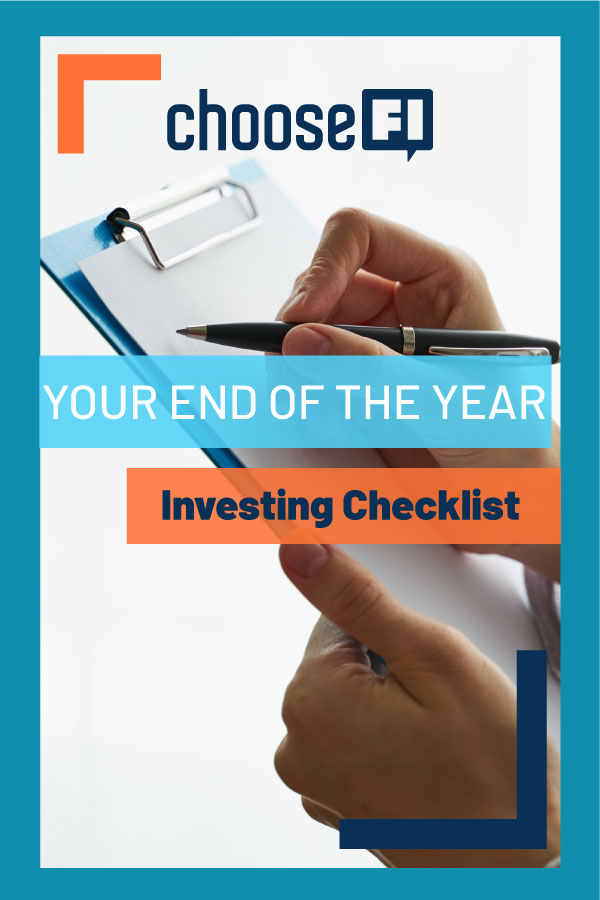The end of the year can be a hectic time for many. Between traveling to visit family for the holidays and trying to get everything wrapped up by year-end at work, it’s easy to let your finances take a back seat before the ball drops in Times Square.
Sadly, many people don’t take the time to closely inspect their finances a few weeks before the end of the year to make sure everything is on track. Those people may miss out on being able to use the last few weeks of a year to take advantage of opportunities.
Don’t be those people. Here are a few year-end financial tasks you should consider completing to focus on getting at least 1% better before the end of the year.
Check Your Savings Year to Date
One of the first things you should do is check on your projected yearly savings. With just a few weeks left in the year, you still have time to make adjustments to reach your goals if you’ve fallen behind.
Even if you’ve already met your savings goals, you should check to see if you can make additional contributions to retirement accounts. If you haven’t hit the annual limits yet and you’ve had a good year financially, you may be able to boost your savings in the last few weeks of the year to max out these accounts.
In 2019, 401(k)s, 403(b)s, 457 and TSP have a $19,000 limit if you’re under age 50. If you’re 50 or older, you can contribute an additional $6,000. Simple IRAs have a $12,500 limit with a $3,000 catch-up contribution for those aged 50 and older. IRAs and Roth IRAs have a $5,500 limit with a $1,000 catch-up contribution for those 50 and older.
You can also take this time to evaluate how much to set aside next year. If you’re not maxing out your retirement accounts, consider increasing your contributions by a percentage or two. You should also plan your retirement contributions so you can take full advantage of any 401(k) or other retirement plan matches you have available to you.
Related: How To Calculate Your Savings Rate
Consider Harvesting Gains or Losses
Typically, you hear about harvesting losses at the end of the year. This refers to selling investments that are worth less today than when you bought them. You can use your losses to offset any gains you’ve realized during the year. This is a great way to save money on taxes.
However, you can also focus on harvesting gains. While this would seem counterintuitive and could cost you money, you may be able to do this for free if you’re in the sweet spot for taxable income. If you’ll be in the 10 or 12% tax brackets, the rate you’ll pay on capital gains is 0%. That said, once the capital gains result in you exiting the 12% bracket, you’ll have to pay regular capital gains taxes.
Podcast Episode: Capital Gains Harvesting; Never Pay Taxes Again
Check Your Investment Fees
December can be a great time to take a look at the fees you pay to invest. Every part of a percent you pay in fees is money that doesn’t result in compounded returns to help grow your investments. Minimizing fees should be a top priority that you examine annually.
First, look at the fees you’re paying to your account providers such as your 401(k) or other workplace retirement plan, IRAs, and taxable investment accounts. If you’re using a financial advisor, take a look at how much they charge you to manage your money, too.
If any of these fees are unreasonable or could be lower elsewhere, figure out how you can avoid these fees going forward unless they provide more value than you pay. You may want to move your IRAs, taxable investment accounts, and financial advisor accounts to a cheaper brokerage firm that offers the same or similar investment choices.
Related: How To Move Money From A Financial Advisor To Vanguard
Unfortunately, you can’t move your 401(k) until you no longer work for an employer in most cases. If you’re holding on to a 401(k) from an old job that has awful fees, get it rolled over to a lower fee account quickly.
Once you’ve finished investigating account-based fees, you’ll want to take a look at the fees you pay to invest in your particular investments like your index funds. As with other fees, you should try to keep the fees as low as possible. Look to see if there are other similar investments with lower fees you can switch to. Just be careful if you do make the switch. It can trigger gains or losses that may impact your tax bill.
Listen: Let’s Talk About Fees/Why Investment Fees Are Evil And How To Avoid Them
Rebalance Your Portfolio
You should have a target portfolio allocation for how you want to invest your money based on your risk tolerance. Target allocations will help you from panic selling a portfolio that’s too aggressive or from missing out on returns from being too conservative. Of course, target portfolio allocations only work when you keep your portfolio balanced.
Over time, your investments that outperform will become a larger percentage of your portfolio and the assets that underperform will shrink. If you don’t sell the overperforming assets to buy more of the underperforming assets through a process called rebalancing, you put yourself at risk of being invested too aggressively. This opens the door to panic selling and suboptimal returns.
December is a good time to take a look at your portfolio to make sure it’s properly balanced. If it isn’t, sell outperforming assets and purchase underperforming assets to get your portfolio back in check.
Empty Your Flexible Spending Accounts
Flexible spending accounts are a great way to save money on income taxes. Sadly, the money in a flexible spending account must be used by the end of the year or you’ll lose it.
While some employers will allow you to carry over up to $500 per year, make sure your balance won’t exceed any carryover amounts. Otherwise, you’re basically burning money without the fun of actually setting it on fire.
Project Your Tax Liability
You may want to run the numbers to see how much you’ll either owe in income tax or receive in a refund if you have a good understanding of how taxes work. Based on the result, you might be able to take action before the end of the year. For instance, boosting your pre-tax deductible retirement contributions can reduce your tax bill.
It’s difficult to set aside time during the holidays to focus on your finances, but it will definitely pay off. You’ll be ready to start the new year in better shape. Then, you can focus on making next year even better than the past year as you continue on your path to financial independence.
Related Articles




